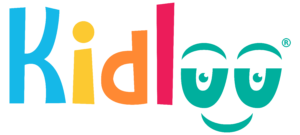Unveiling the Journey: Stages of Speech and Language Development in Children

Introduction
Speech and language development is a remarkable journey that takes place in the early years of a child’s life. Every child, whether typically developing or with special needs, embarks on this journey, and understanding the stages of speech and language development is essential for parents, caregivers, and educators. In this blog, we will explore the stages of speech and language development, acknowledging the unique path that children with special needs may follow, and offer insights into how to identify and support all children along their communication journey.
Stages of Speech and Language Development
Speech and language development follows a sequence of stages, although each child may progress at their own pace. Here are the typical stages:
Infancy (0-12 Months):
Prelinguistic Communication (0-8 Months): Babies begin to communicate through cries, coos, and nonverbal gestures. They respond to familiar voices and make eye contact.
Babbling (6-10 Months): Children start to produce repetitive sounds and babbling consonant-vowel combinations (e.g., “bababa” or “mamama”).
Toddlerhood (1-3 Years):
First Words (12-18 Months): Most toddlers utter their first recognizable words, typically related to people, objects, or actions in their immediate environment.
Vocabulary Expansion (18-24 Months): Toddlers rapidly acquire new words and begin forming two-word phrases to express their needs and desires.
Sentence Building (2-3 Years): By age three, children can construct more complex sentences, engage in simple conversations, and ask questions.
Preschool (3-6 Years):
Advanced Vocabulary (3-4 Years): Vocabulary continues to expand, including the use of plurals, past tense, and more complex sentence structures.
Narrative Skills (4-5 Years): Children develop the ability to tell stories, recount events, and engage in imaginative play.
Speech Clarity (5-6 Years): Articulation improves, and speech sounds become more intelligible, allowing them to communicate effectively.
School-Age (6+ Years):
Reading and Writing (6+ Years): Children learn to read and write, further enhancing their language abilities.
Abstract Thinking (7+ Years): Communication becomes more abstract, enabling them to discuss complex ideas, emotions, and concepts.
Social Communication (8+ Years): They develop more advanced social language skills, including understanding humor, sarcasm, and implied meaning.
Identifying Speech and Language Challenges
Children, both typically developing and those with special needs, may encounter speech and language challenges. Identifying these challenges is crucial for providing appropriate support:
Lack of Progress: If a child significantly lags behind peers in achieving speech and language milestones, it may indicate a delay or disorder.
Limited Vocabulary: Difficulty acquiring and using words, or a lack of progress in sentence formation, could be a red flag.
Articulation Issues: Speech clarity issues, such as difficulty pronouncing sounds or words, may be indicative of a speech disorder.
Social Communication Challenges: Difficulty with social interactions, including eye contact, taking turns in conversation, or understanding nonverbal cues, could be a concern for children of all abilities.
Hearing Problems: Children with hearing impairments may have speech and language delays, so regular hearing assessments are crucial.
Regression: If a child experiences a sudden loss of previously acquired speech and language skills, it may be a sign of a deeper issue.
Supporting Children's Speech and Language Development
Regardless of a child’s abilities, there are several strategies that parents, caregivers, and educators can employ to support their speech and language development:
- Create a Language-Rich Environment: Surround children with language-rich experiences, including reading books, storytelling, and engaging in conversations.
- Encourage Communication: Foster an environment where children feel encouraged to communicate. Be attentive and responsive to their attempts to express themselves.
- Provide Opportunities for Social Interaction: Arrange playdates and activities that promote social interaction and communication with peers.
- Seek Professional Help When Needed: If you have concerns about your child’s speech and language development, consult with a speech-language therapist or other specialists for assessment and guidance.
- Be Patient and Supportive: Recognize that every child is unique and may progress at their own pace. Celebrate their achievements, no matter how small, and provide a supportive, nurturing environment.
Conclusion
Speech and language development is a fascinating journey that all children embark on, and it’s essential to understand the stages and potential challenges. By recognizing that each child, whether typically developing or with special needs, is on their own unique path, we can better support their communication journey. Early intervention, a language-rich environment, and patience play vital roles in helping children reach their full communication potential, enabling them to express themselves and connect with the world around them.
